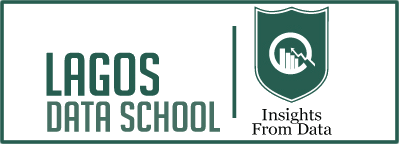PART I • THE RESEARCH PROCESS AND
DATA COLLECTION 1
Module 1: The Research Process
Introduction
Read the Literature and Identify Gaps or Ways to Extend the Literature
Examine the Theory
Develop Your Research Questions and Hypothesis Develop Your Research Method
Analyze the Data
Write the Research Paper
Module 2: Sampling Techniques
Introduction
Sample Design
Selecting a Sample
- Probability and Non probability Sampling
- Identifying a Sampling Frame
- Determining the Sample Size
- Sample Selection Methods
Sampling Weights
- Calculating Sampling Weights
- Using Sampling Weights
Module 3: Questionnaire Design
Introduction
Structured and Semi-Structured Questionnaires
Open- and Closed-Ended Questions
General Guidelines for Questionnaire Design
Designing the Questions
- Question Order
- Phrasing the Questions
Recording Responses
- Responses in the Form of Continuous Variables
- Responses in the Form of Categorical Variables
Skip Patterns
Ethical Issues
PART II • DESCRIBING DATA
Module 4: An Introduction to Stata
Introduction
Opening Stata and Stata Windows
- Results Window
- Review Window
- Command Window
- Variables Window
- Properties Window
Working With Existing Data
Entering Your Own Data Into Stata
Using Log Files and Saving Your Work
Getting Help
- Help Command
- Search Command
- Stata Website
- UCLA’s Institute for Digital Research and Education Website
Module 5: Preparing and Transforming Your Data
Introduction
Checking for Outliers
Creating New Variables
- Generate
- Using Operators
- Recode
- Egen
Missing Values in Stata
Summary of Commands Used in This Chapter
Module 6: Descriptive Statistics
Introduction
Types of Variables and Measurement
Descriptive Statistics for All Types of Variables:
Frequency Tables and Modes
Frequency Tables
Mode
Descriptive Statistics for Variables Measured as Ordinal, Interval,
and Ratio Scales: Median and Percentiles
- Median
- Percentiles
Descriptive Statistics for Continuous Variables: Mean, Variance,
Standard Deviation, and Coefficient of Variation
- Mean
- Variance and Standard Deviation
- Coefficient of Variation
Descriptive Statistics for Categorical Variables Measured on a
Nominal or Ordinal Scale: Cross Tabulation
Applying Sampling Weights
Formatting Output for Use in a Document (Word, Google Docs, etc.)
Graphs to describe data
- Bar Graphs
- Box Plots
- Histograms
- Pie Charts
Summary of Commands Used in This Chapter
PART III • TESTING HYPOTHESES
Module 7: TheNormalDistribution
Introduction
The Normal Distribution and Standard Scores
Sampling Distributions and Standard Errors
Examining the Theory and Identifying the Research
Question and Hypothesis
Testing for Statistical Significance
Rejecting or Not Rejecting the Null Hypothesis
Interpreting the Results
Central Limit Theorem
Presenting the Results
Summary of Commands Used in This Chapter
Module 8: Testing Hypothesis About aSingle Mean
Introduction
When to Use the One-Sample t Test
Calculating the One-Sample t Test
Conducting a One-Sample t Test
Interpreting the Output
Presenting the Results
Module 9: TestingaHypothesisAboutTwoIndependentMeans
Introduction
When to Use a Two Independent-Samples t Test
Calculating the t Statistic
Conducting a t Test
Interpreting the Output
Presenting the Results
Module 10: One-WayAnalysisofVariance
Introduction
When to Use One-Way ANOVA
Calculating the F Ratio
Conducting a One-Way ANOVA Test
Interpreting the Output
Is One Mean Different or Are All of Them Different?
Presenting the Results
Summary of Commands Used in This Chapter
Module 11: CrossTabulationandtheChi-SquaredTest
Introduction
When to Use the Chi-Squared Test
Calculating the Chi-Square Statistic
Conducting a Chi-Squared Test
Interpreting the Output
Presenting the Results
Summary of Commands Used in This Chapter
PART IV • EXPLORING RELATIONSHIPS
Module 12: LinearRegressionAnalysis
Introduction
When to Use Regression Analysis
Correlation
Simple Regression Analysis
Multiple Regression Analysis
Presenting the Results
Module 13: RegressionDiagnostics
Introduction
Measurement Error
Specification Error
- Types of Specification Errors
- Diagnosing Specification Error
- Correcting Specification Error
Multicollinearity
Heteroscedasticity
Endogeneity
Nonnormality
Presenting the Results
Module 14: Regression Analysis With Categorical
Dependent Variables
Introduction
When to Use Logit or Probit Analysis
Understanding the Logit Model
Running Logit and Interpreting the Results
- Running Logit Regression in Stata
- Interpreting the Results of a Logit Model
Logit Versus Probit Regression Models
Regression Analysis With Other Types of Categorical
Dependent Variables
Presenting the Results
PART V • WRITING A RESEARCH PAPER
Module 15: Writing a Research Paper
Introduction
Introduction Section of a Research Paper
Literature Review
Theory, Data, and Methods
Results
- Logical Sequence
- Tables, Figures, and Numbers
- Reporting Results From Statistical Tests
- Active Versus Passive Voice and the Use of First-Person Pronouns
